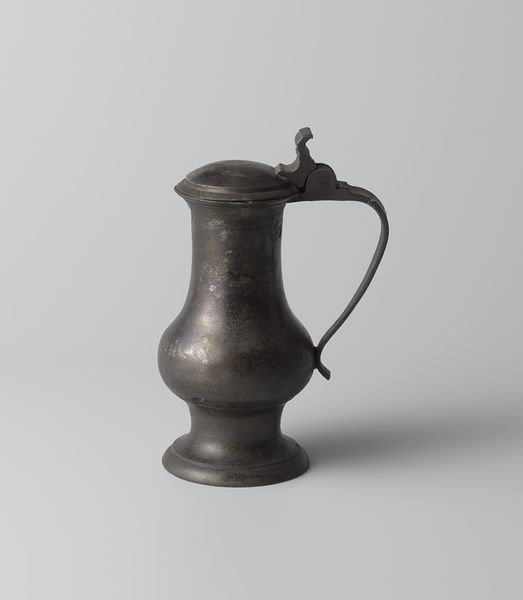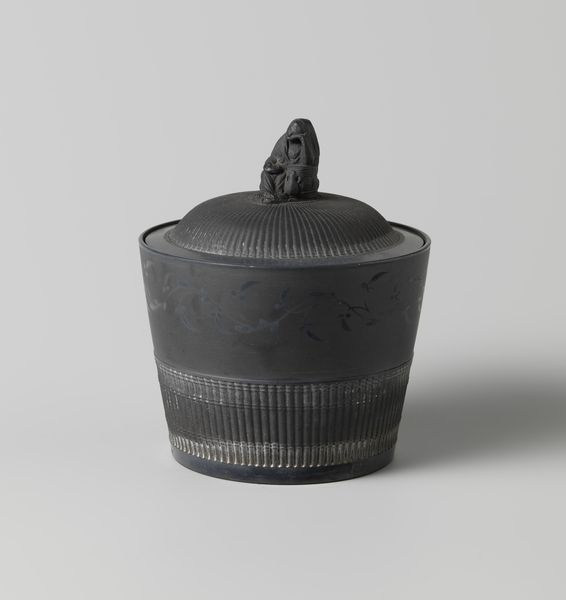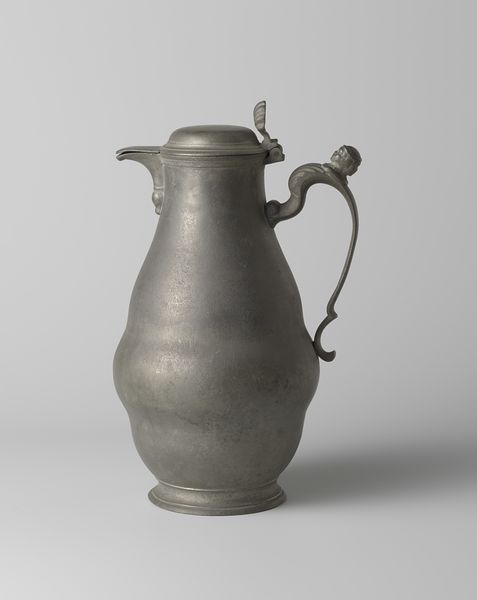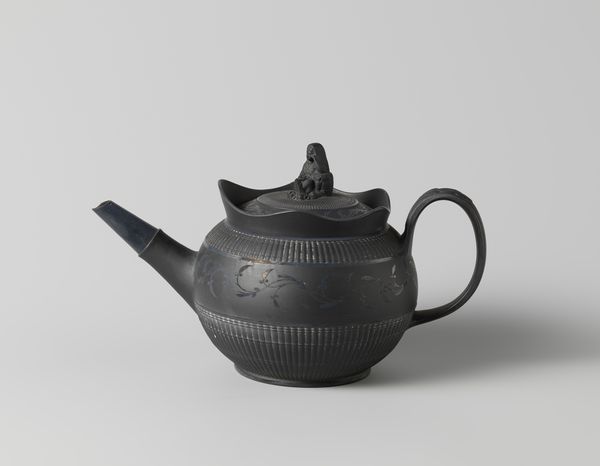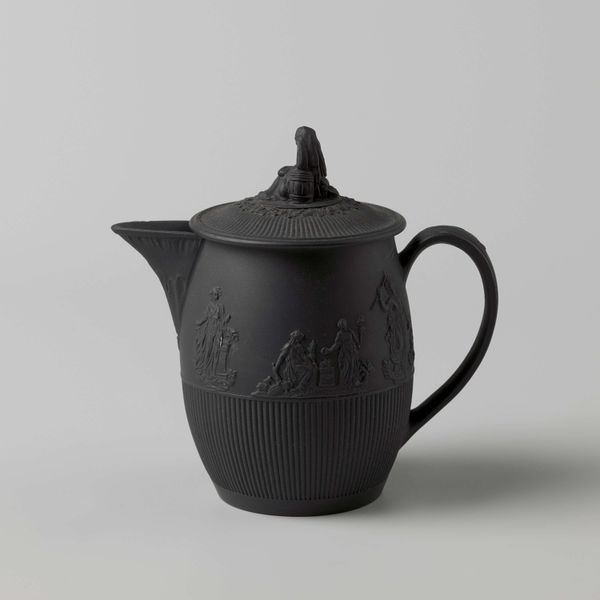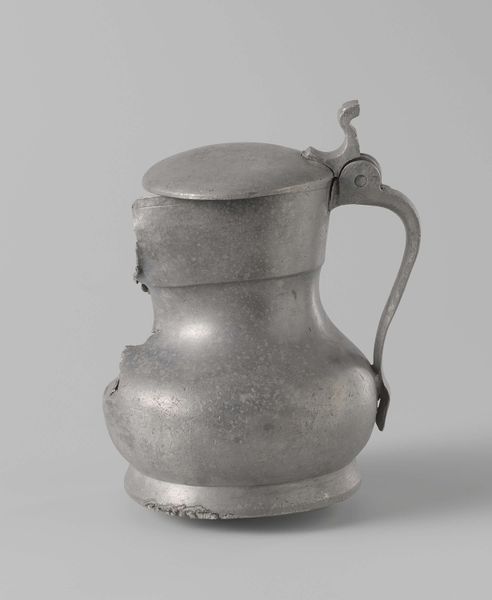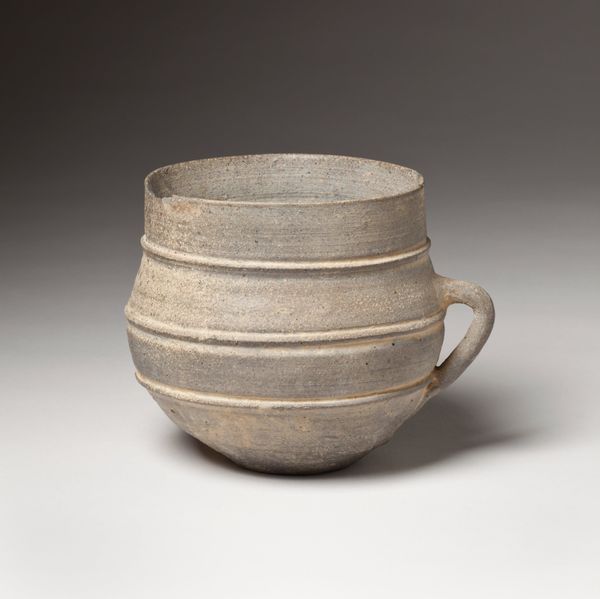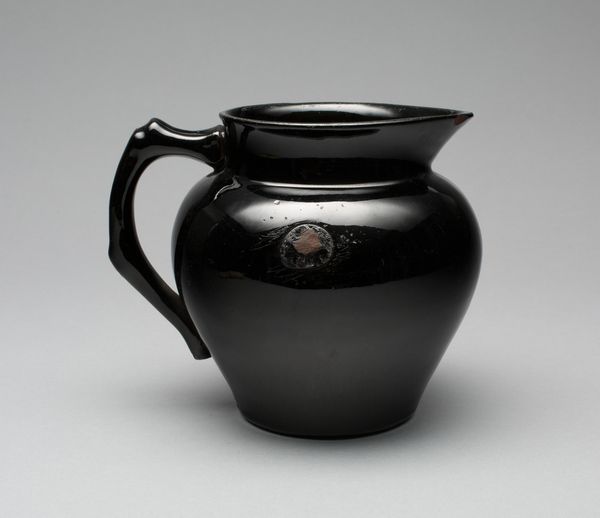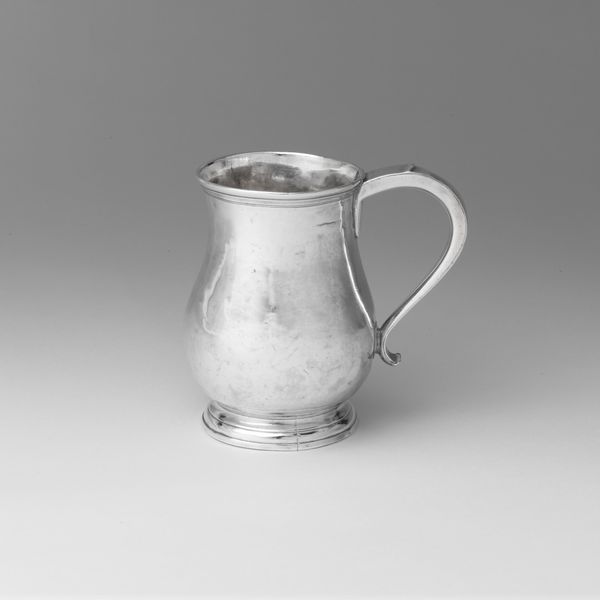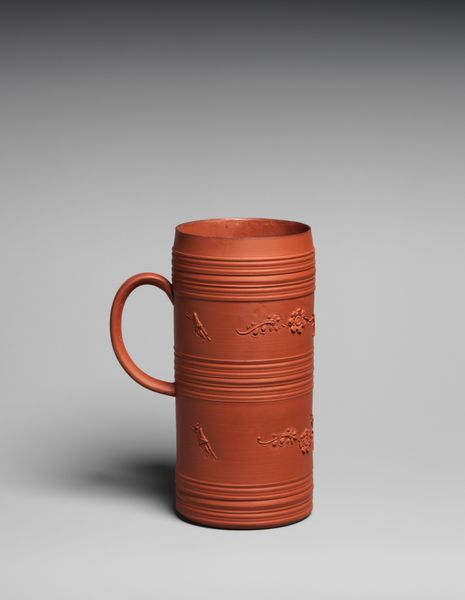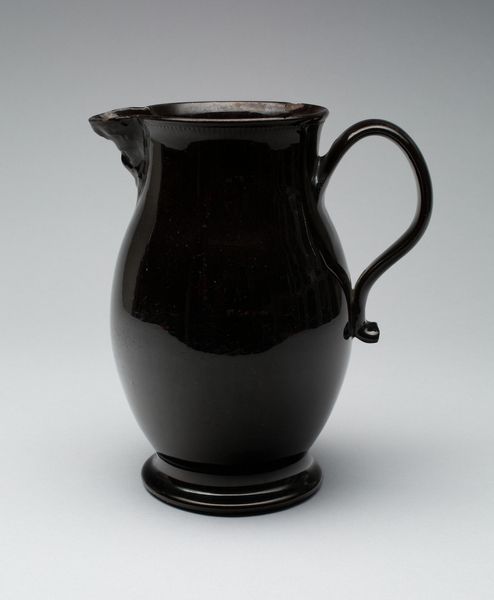
ceramic, earthenware
#
ceramic
#
earthenware
#
product photography
Dimensions: height 14.1 cm, width 12.8 cm, diameter 8.9 cm, diameter 7 cm
Copyright: Rijks Museum: Open Domain
Curator: This is a Black Basalt milk jug, crafted by Neale & Palmer between 1790 and 1825. Editor: The subdued tone evokes a sense of classical austerity. Almost funereal, in a way, yet with an undeniable elegance. Curator: Black Basalt ware was developed as a cheaper alternative to porcelain, very popular because it mirrored the shapes and styles of luxury silverware. The pursuit of affordability through ceramic, a democratization of form. Editor: It's intriguing how the black colour affects its visual language. The imagery along the top—perhaps stylized foliage?—it becomes spectral, hinting at secret or lost meanings. Does it call back to a particular classical myth, or conjure images of pastoral life? Curator: Likely classical. It was a time of revivals, and this speaks to broader economic shifts where Wedgwood successfully manufactured ‘ancient’ forms, exploiting and creating consumer markets. Mass production met aristocratic desire. Editor: You’re right; it lacks a certain… handcrafted charm. The pursuit of precision leaves it somewhat cold, doesn’t it? Yet the black enhances the symbolism of rebirth or resilience perhaps, since basalt forms from volcanic fire? Curator: Perhaps the floral ornamentation gives a nod to the domestic sphere—balancing production, labour, and service. The industrializing world impacting both the higher and lower reaches of the classes through product availability. Editor: Considering this object, the play of light against the matte surface, combined with those somewhat obscured figures...it’s not simply a milk jug. The jug stands as a meditation on the human relationship to nature. Curator: Precisely! To see something everyday in the production, is how we find an unexpected depth when examining labor, material, form and historical context. Editor: Agreed, there's something potent about observing the mundane and unlocking latent significances, especially regarding culture and history. Curator: It adds nuance to its simplicity, as we trace its role from kiln to table, manufacturer to owner.
Comments
No comments
Be the first to comment and join the conversation on the ultimate creative platform.
